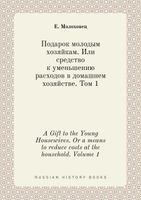Brokgauz and Efron described three varieties of mustard that were available in nineteenth-century Russia, black (Brassica nigra), Sareptskaja (Brassica juncea), and white (Sinapis alba). The Sareptskaja mustard, mentioned frequently by Molokhovets, at that time grew only in India and in the southern steppes of Russia, which is why I suppose she called it “local” mustard. Also known as Russian mustard within Russia, Brassica juncea used to be called Indian or oriental mustard in the West, but is now called brown mustard. Although formerly Brassica juncea was not cultivated commercially in North America, it is now grown much more widely mainly because of the ease of harvesting it mechanically. As far as I can tell, the color of Brassica juncea must be in the eyes of the beholder. Brokgauz and Efron described two varieties of Sareptskaja mustard, white or yellow and red or black (this presumably describes the color of the seeds, but it is not entirely clear) ; other Russian sources refer to Sareptskaja mustard as blue (sizaja), while Western sources mostly describe the seeds as brown. (Entsiklopedicheskij slovar’, Vol. 17, 346–349; Tovaryny slovar’, Vol. 2, 314–319; Rybak, Romanenko, and Korableva, Prjanosti, 33–34; Anufriev, Kirillova, and Kiknadze, Sousy i Spitsii, 83–85; Norman, Book of Spices, 23–25; Stone, The Mustard Cookbook, 9–10; Garland, Book of Herbs and Spices, 162–163; and Sturtevant’s Edible Plants of the World, 107.)


